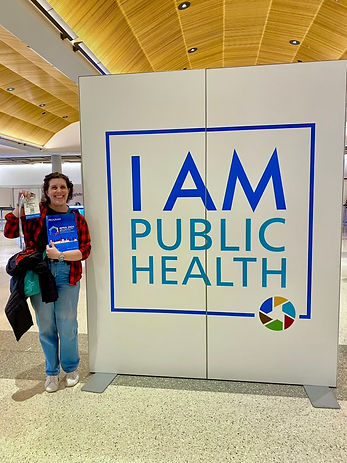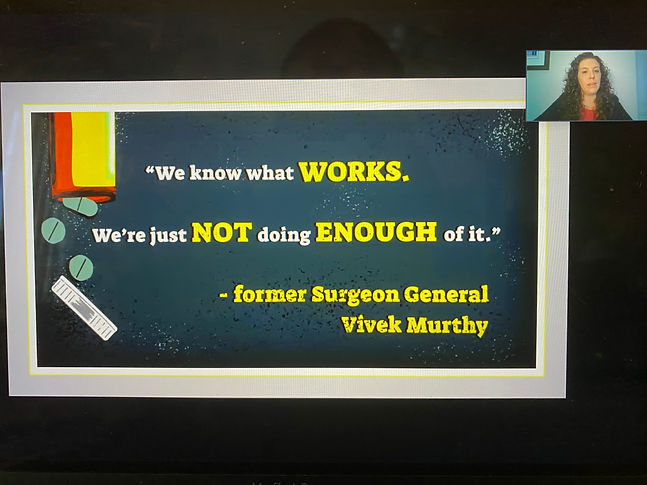
Alexandria Drake, PhD, MPH
Assistant Professor at the University of Puget Sound
Email: Adrake@pugetsound.edu

I am a public health assistant professor and scholar studying how structural and cultural factors prohibit and promote access to healthcare and health decision-making practices. I teach graduate level courses in the Master of Public Health program at the University of Puget Sound.
I bring my experiences as a Health Equity Epidemiologist for the Arizona Department of Health Services and Program Manager for the Ohio Research Association for Public Health Improvement into my coursework.
My research has an applied focus, with the intent of providing data-driven information to policymakers and community practitioners. My current research focuses on treatment access to medications for opioid use disorder (MOUD). I have also completed research on housing insecurity, utility bill burden, homelessness, food insecurity, and global ethnic discrimination.
Teaching
My teaching philosophy is built on two pillars: 1) Establishing an equitable and welcoming learning environment 2) Promoting critical thinking and problem-solving strategies at the individual student and collective class level.
I serve as the faculty practicum coordinator in the MPH program and work with students to identify and complete meaningful practicum opportunities. I also teach classes as, PH604: Health Disparities and Marginalized Populations; PH630: Professionalism, Leadership, and Ethics; and PH607: Program Planning and Evaluation. I recently taught a special topics course with both graduate and undergraduate students titled PH 624/ CONN 490: Bring Out Your Dead- How Past Outbreaks Informed Modern Public Health and Medicine. I look forward to thinking about other future courses that provide students with the opportunity to expand their skillsets and think more critically about the world.

Research Experience
My research spans from global to local work.
I am currently the Director of the Health Equity Research Lab (HERL) at the University of Puget Sound. This group is housed within the Master of Public Health Program but is open to all undergraduate and graduate students. HERL looks to put public health into action through community engagement and research. At Arizona State University, I worked for the Knowledge Exchange for Resilience, an ASU-based research group committed to sharing knowledge, catalyzing discovery, and building solutions to catalyze change in order to build community resilience in Maricopa County, Arizona.
I was also a lab supervisor and graduate researcher in the Inclusive Human Learning (IHL) Research Group. With the IHL, I helped conduct research on documenting global ethnic disparities.



Peer-Reviewed Publications
References and Links to Papers
Food insecurity and disasters: predicting disparities in total and first-time food pantry visits during the COVID-19 pandemic
Drake, A. J., Phillips, L. A., Karna, B., Murugesan, S. B., Villa, L. K., & Smith, N. A. (2022). Food insecurity and disasters: predicting disparities in total and first-time food pantry visits during the COVID-19 pandemic. Food Security, 1-12
Mobile pantries can serve the most food insecure populations
Villa, L., Bharathi Murugesan, S., Phillips, L., Drake, A., & Smith, N. (2022.). Mobile Pantries Can Serve the Most Food Insecure Populations. Health Equity. http://doi.org/10.1089/heq.2021.0006
Understanding the spatial patchwork of predictive modeling of first wave pandemic decisions by us governors
Solís P., Dasarathy, G., Turaga, P., Drake, A., Vora, K. J., Sajja, A., Raaman, A., Praharaj, S., & Lattus, R. (2021). Understanding the spatial patchwork of predictive modeling of first wave pandemic decisions by us governors. Geographical Review, 111(4), 592–615. https://doi.org/10.1080/00167428.2021.1947139
Worldwide fertility declines do not rely on stopping at ideal parities
Hruschka, D. J., Sear, R., Hackman, J., & Drake, A. (2019). Worldwide fertility declines do not rely on stopping at ideal parities. Population studies, 73(1), 1-17.
Other Publication Contributions
Displaced in the Sun Belt: Mapping Housing Loss Across the American South
Displaced in America: Mapping Housing Loss Across the United States
Displaced in the Sun Belt: Mapping Housing Loss Across the American South, New America- Future of Land and Housing New Practice Lab, 2021
https://www.newamerica.org/future-land-housing/reports/displaced-sun-belt/
Displaced in America: Mapping Housing Loss Across the United States, New America- Future of Property Rights Program, 2020
https://www.newamerica.org/future-property-rights/reports/displaced-america/
Leading Causes of Death and Health Disparities Among American Indian and Alaska Native Population in Arizona
Leading Causes of Death and Health Disparities Among American Indian and Alaska Native Population in Arizona, Arizona Department of Health Services, 2019
“Healthy Smile Healthy Life” Project Updated Oral Health Data Profile for Year 3 Project Period
“Healthy Smile Healthy Life” Project Updated Oral Health Data Profile for Year 3 Project Period, Arizona Department of Health Services, 2018 https://www.azdhs.gov/documents/prevention/tobacco-chronic-disease/health-disparities/healthy-smile-healthy-life-project/2018-oral-heal-disparities-profile.pdf/
“Healthy Smile Healthy Life” Project Updated Oral Health Data Profile for Year 2 Project Period
“Healthy Smile Healthy Life” Project Updated Oral Health Data Profile for Year 2 Project Period, Arizona Department of Health Services, 2017

My Work
Health Equity and Health Promotion in Practice

Unmet Need of Treatment for Opioid Use Disorder
This dashboard highlights counties with the greatest unmet need of medication treatment (MAT) options for opioid use disorder. These highlighted counties may have a history of neglect in terms of resource allocation. Counties in dark red may demand prioritized intervention efforts to increase the number of medical providers offering MAT services
Housing Insecurity and Homelessness in Maricopa County, Arizona
Researchers from New America’s Future of Property Rights program teamed up with Arizona State University’s Knowledge Exchange for Resilience Center to analyze five years of Maricopa County eviction and mortgage foreclosure data. We also interviewed government officials, housing advocates, real estate developers, journalists, lawyers, service providers, and community members to gain an in-depth understanding of local issues related to housing loss.
